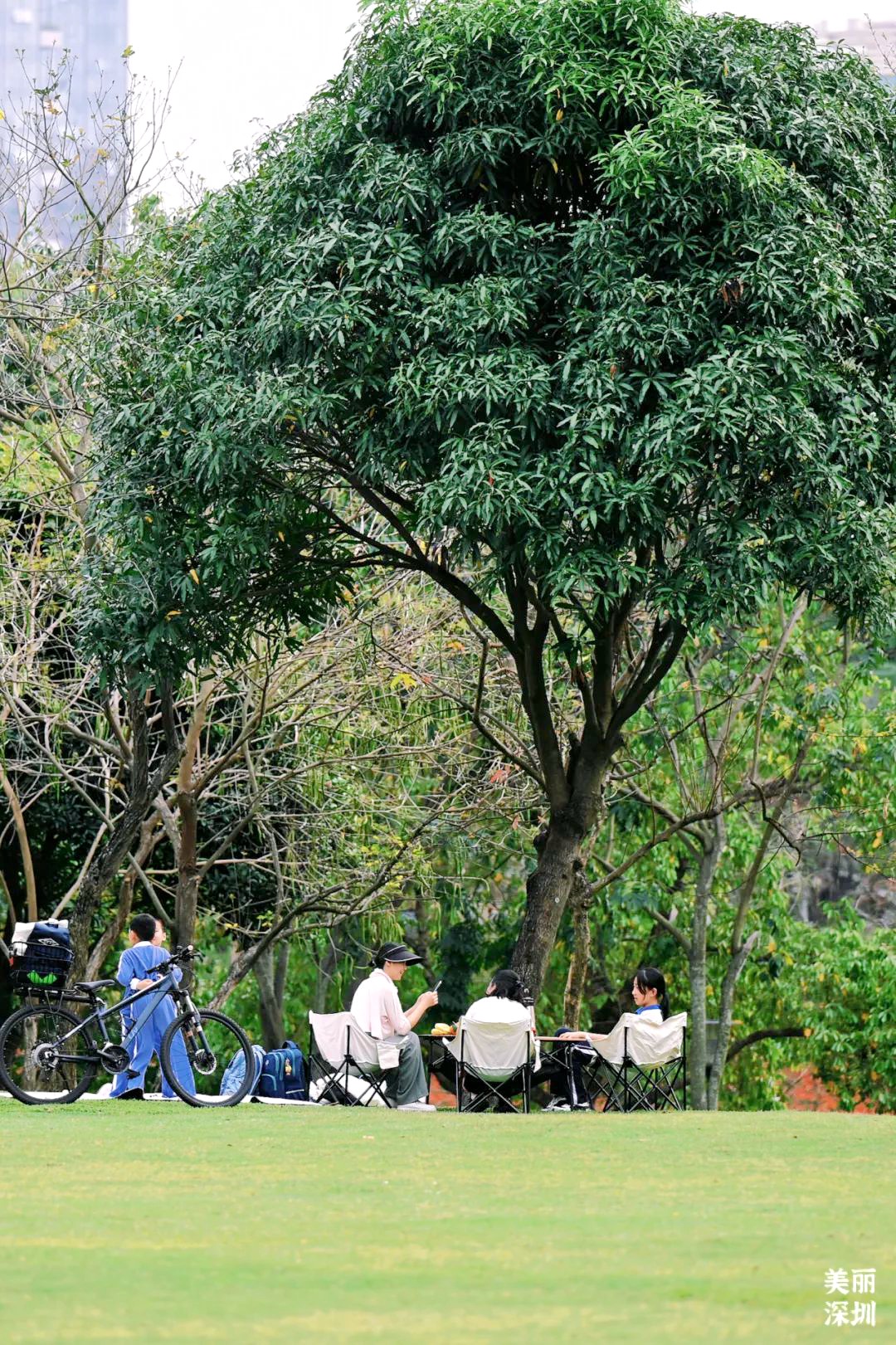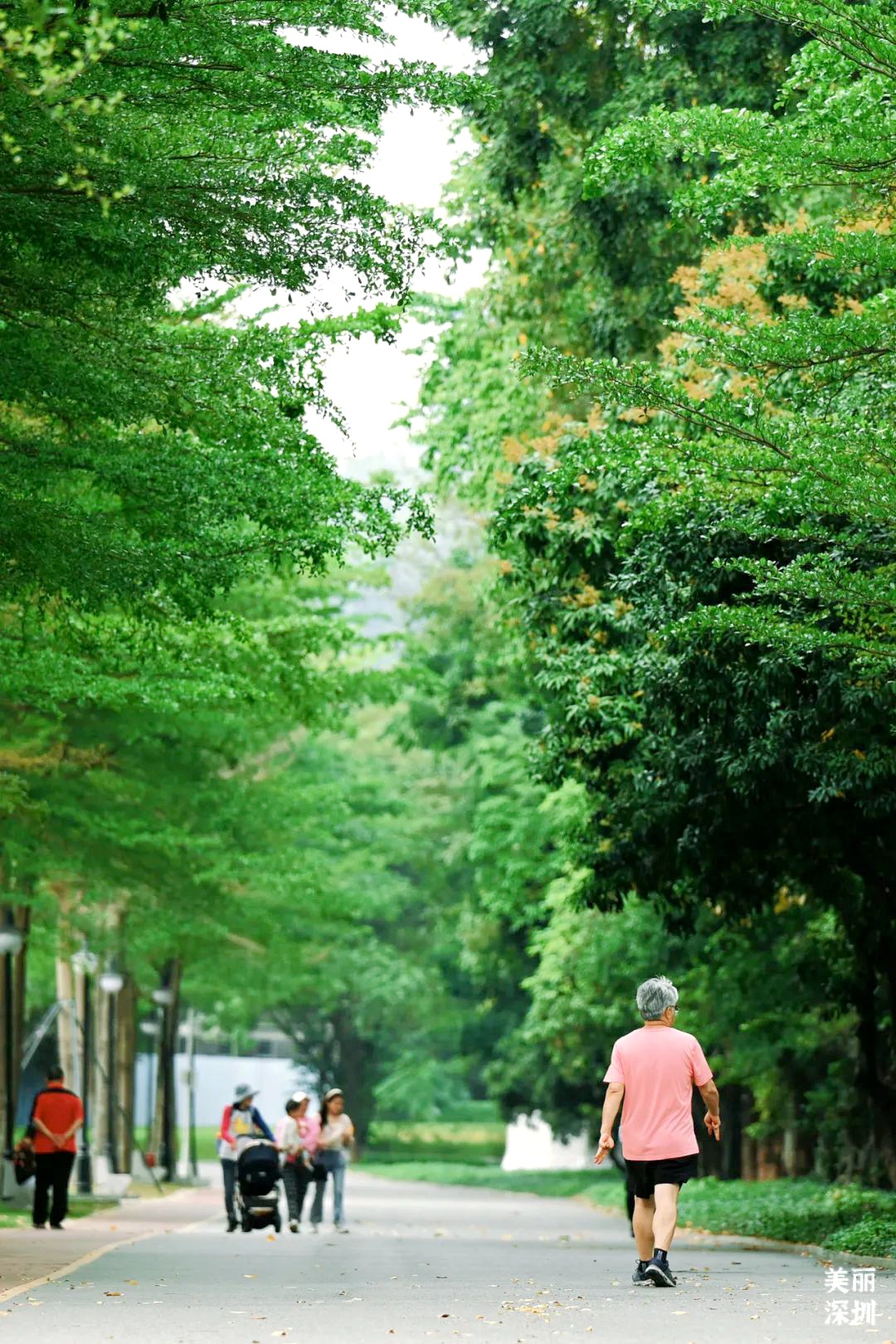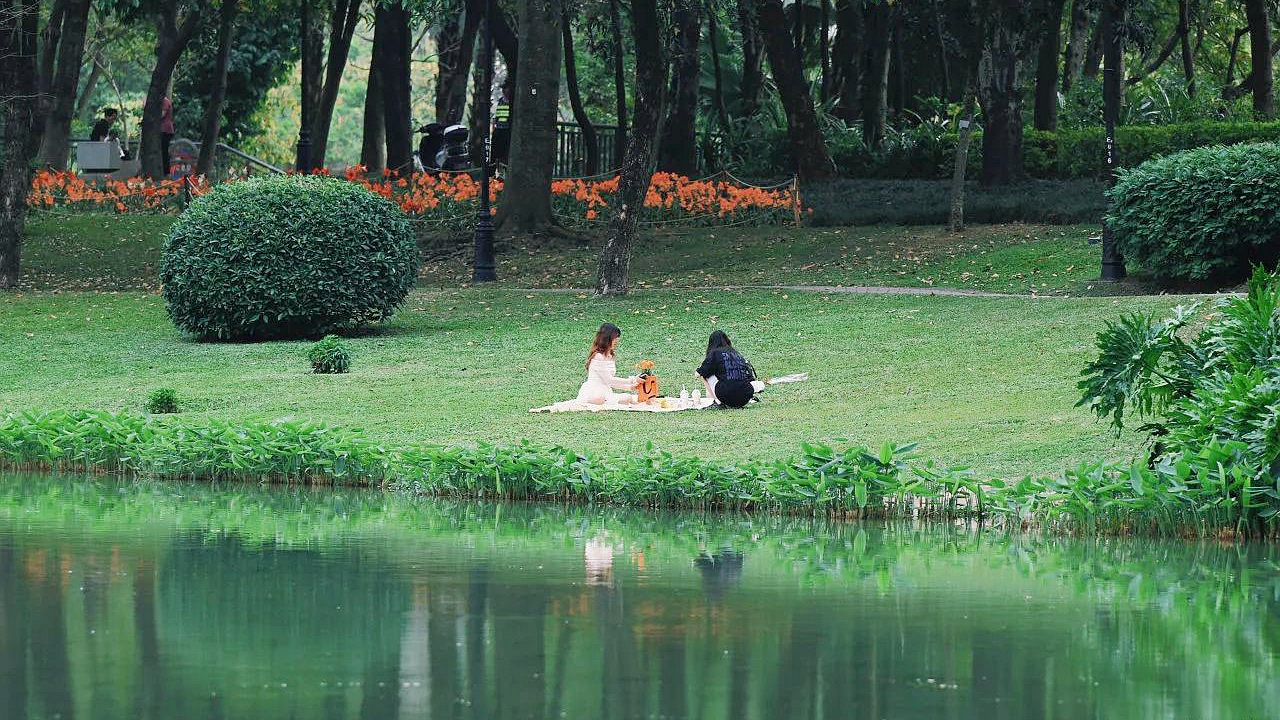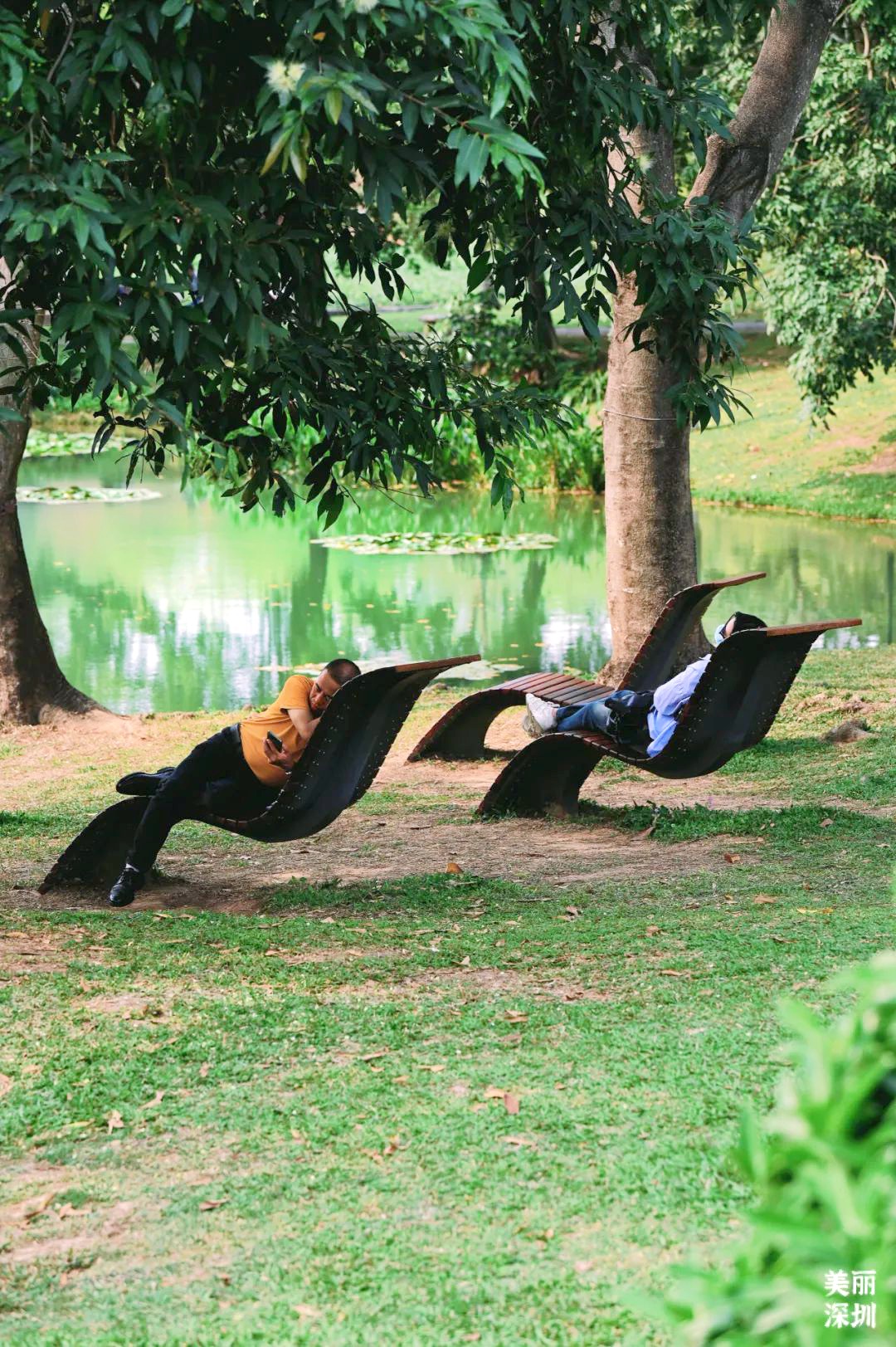Experiencing '20 minutes in park theory' in SZ
Writer: Tang Li | Editor: Zhang Zeling | From: Shenzhen Daily | Updated: 2024-04-10

During the Qingming Festival holiday, discussions about the “20 minutes in park theory” have ignited a frenzy on Chinese social media platforms such as Weibo and Xiaohongshu. With nearly 1,290 parks scattered across its less than 2,000 square kilometers of land, Shenzhen emerges as the perfect city to test the validity of this theory.
Originating from an article published in the International Journal of Environmental Health Research, the theory suggests that spending a short amount of time outdoors each day can significantly boost happiness levels. Even just spending 20 minutes in a park daily, without engaging in physical exercise, can enhance one’s well-being.

Shenzhen boasts a greenery coverage of over 90% within a 500-meter radius of park spaces, making the concept of “seeing green when stepping out, and finding a park within 500 meters” a reality. The city’s parks, serving as precious urban oases, cater perfectly to the public’s craving for communal spaces and a connection with nature. During holidays, Shenzhen residents flock to the mountains and parks, embracing nature passionately, and the Qingming Festival is no exception.

During the three-day holiday, Wutong Mountain witnessed overcrowded hiking trails due to the influx of hikers. At Dameisha Beach Park, visitors not only enjoyed the azure sea but also witnessed a sea of people on the sandy shores. Meanwhile, at Fenghuang Mountain Park, Yangmeikeng, and Maluan Mountain Country Park, visitors found surrounding parking lots reaching full capacity before 10 a.m.

“It feels like half of the Shenzhen people are out hiking. We encountered ‘traffic jams’ on the mountain,” said a citizen surnamed Xu, who hiked Wutong Mountain with friends April 4. “People are increasingly turning to outdoor activities to exercise, unwind, and improve their overall well-being. This ‘20 minutes in park theory’ is quite effective; it really helps to relax both body and mind.”
From military training-style travel to city walks, and now to the “20 minutes in park theory,” the frequent appearance of these internet buzzwords in recent years indicates a growing emphasis on physical and mental health and a pursuit of a better quality of life within high-pressure work environments. Many netizens also shared their own “health theories,” such as daily walks, 10-minute meditation, healthy breakfasts, smiling daily, adequate sleep, moderate hydration, and social interactions.

On social media platforms, many enthusiastic residents of Shenzhen offered suggestions to enhance life quality and improve urban planning and development. Some suggest building car parks within parks, others hope for opportunities to go boating in parks, while some advocate for the creation of more child-friendly parks. These diverse suggestions serve as a reminder for government departments to prioritize the establishment and utilization of public spaces in urban planning and development, allowing more people to benefit from the practical outcomes of the “20 minutes in park theory.”